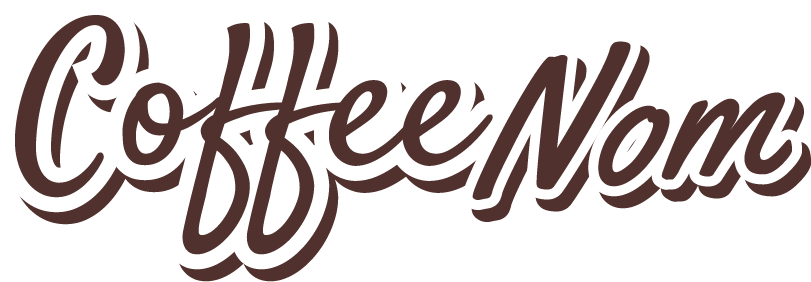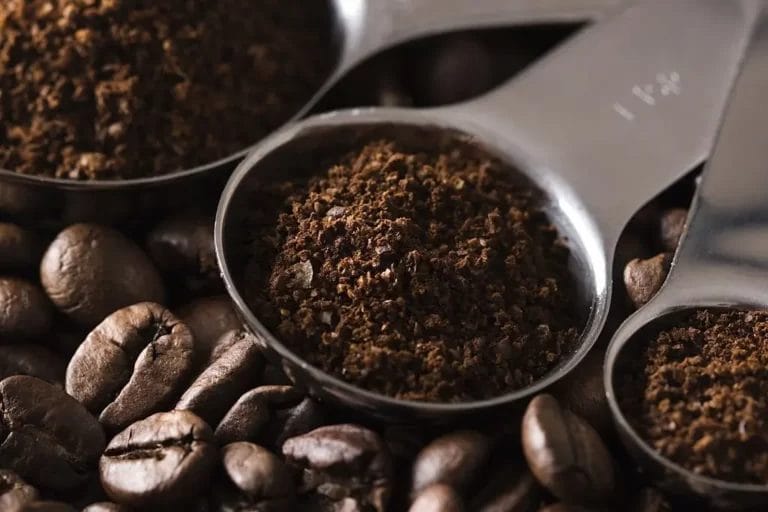Some coffee brands are too expensive for regular people to get their hands on. But that hasn’t stopped coffee lovers from going out of their ways to secure one of the most expensive coffee beans for their morning cup.

Today, we’ll be looking at 15 of such costly coffee beans, whose prices are more than a luxury for commoners like us.
Coffee #1: Black Ivory ($1,500/Lb.)
You could tell this one would be on the top of the list just from the title alone. Besides, anything with “ivory” in their names is never cheap. If you don’t believe me, ask Dante.

If the heavy price tag doesn’t put you off, the processing of this coffee sure will. In simpler terms, Black Ivory coffee can also be referred to as “elephant poop coffee.”
The farmers achieve this coffee by feeding elephants coffee beans, which pass through their digestive system and, eventually, their poop. The special enzymes present in an elephant’s stomach are what process these coffee beans in a unique way.
The farmers then sort the whole beans out of the poop and discard the broken ones. The beans are then thoroughly washed, processed and packed, offering the world’s most prized and exquisite coffee.
Coffee #2: Kopi Luwak ($600-$1300/Lb.)
The very first “poop coffee” that took the world by storm, the rarity of 100% Kopi Luwak is what drives the prices so high.
Kopi Luwak is the coffee collected from the discharges of Asian Palm Civets. Wild civets have a strong nose for fine coffee, so they always choose the best coffee cherry for their snack. Once a civet passes the bean through its poop, the farmers then collect the beans and wash them before further processing and packaging the civet coffee.
Though in the current market, there is more fraud than real, natural Kopi Luwak coffee, you can still find 100% natural, organic Kopi Luwak coffee.
Coffee #3: Finca El Injerto ($500/Lb.)
This fine coffee is grown at an absurd height of 5,500 feet above sea level. It is even rare that this coffee is produced by only one Guatemalan coffee farm.
The coffee produced in this farm is frequently put up for auction in micro-lots, which fetches a constant price of $500, sometimes more.
Coffee #4: Esmeralda Geisha ($350/Lb.)
Another exceptional coffee that’s best grown on a single farm in Panama is known as “Hacienda Esmerelda.”
The coffee is grown at 1500 meters above sea level, and their brand of Geisha/ Gesha coffee is the best in the world.
Coffee that is more accessible to the masses while still being a specialty coffee has a wide flavor profile that includes notes of juniper berry, rose, and lavender.
Coffee #5: Saint Helena ($160/Lb.)
The name of the coffee comes from the place where it’s grown, the island of St Helena in the South Atlantic. The place has historical significance since this is where Napoleon spent his days of exile.
After being introduced to green-tipped bourbon from Yemen, this small patch of land started growing coffee, also known as “Mocha coffee.”
Saint Helena coffee is really tough to produce and maintain, but the nuance of flavors and the delicacy it provides makes it all worth it.
Starbucks made some coffee from Saint Helena back in 2016. Every 8-ounce bag of coffee was sold for $80.
Coffee #6: Ospina ($120/Lb.)
Named after the family cultivating the coffee, the producers of Ospina are one of the oldest coffee plantations in Colombia, or that’s what they claim at least. But all these decades in the coffee business have given them time to perfect the craft.

Ospina coffee is grown in volcanic soil. The coffee has a strong caramel and nut flavor, with a smooth finishing aftertaste.
Coffee #7: Molokai Coffee ($60/Lb.)
Molokai coffee also comes from Hawaii, like Kona coffee. But this coffee beats Kona coffee in terms of price and flavor. Though the coffee’s claim to success came pretty late in the 1980s, it’s still gaining a steady audience today.
The coffee has a rich flavor with a heavy aftertaste, which will appeal to your taste buds.
Rest assured if you see “Molokai Prime” written on the labels.
Having fun reading about the most expensive coffee beans? Check our piece on different types of Italian coffee.
Coffee #8: Fazenda Santa Inês ($50/Lb.)
Coming from the land of the highest coffee production, Brazil, Fazenda Santa Inês is grown in the mountains, where the plants use mineral water springs as their source of hydration.
Because of the all-natural farming method, the coffee has a mix of fruity notes with caramel flavors. If you want the best flavor out of this coffee, drink this coffee at room temperature.
Coffee #9: Jamaican Blue Mountain Coffee ($65/Lb.)
Jamaican Blue Mountain Coffee is another coffee grown at an almost unbelievable height of 5,000 feet above sea level. The ground is well-fertilized, and there’s more rain at higher levels, making the coffee another all-natural treat.
The coffee started gaining popularity in Japan, and since then, it’s been titled “Java of Kings” for quite a while now. This is because it’s so ingrained in Japanese culture that they’re the leading importers of this coffee.
The flavor of Blue Mountain Coffee is very mild, even without additives. The coffee doesn’t even have a bitter aftertaste, making it perfect for people who dislike bitter coffee. Aside from a clean taste, the coffee also has considerably low acidity.
Sadly, there are many cheap blends out there, making the real deal tougher to find.
Coffee #10: El Injerto Peaberry ($60/Lb.)
Another Guatemalan specialty coffee, a pack of El Injerto, is only made up of small and uniform coffee beans, known as “peaberries.”
The coffee has a strong fruity flavor and floral aroma, creating a split-second illusion that you might be drinking caffeine-flavored fruit juice. However, the coffee also has a wine-like texture with a smooth aftertaste.
Coffee #11: Hawaiian Kona Coffee ($33-55/Lb.)
The conditions for growing Kona coffee are highly specific, so the entire production process of Kona coffee is pretty sophisticated. Combine that with the complex trade regulations of Hawaii, and it’s understandable why this coffee has such a high price.
Coffee #12: Los Planes ($40/Lb.)
This coffee is so perfect that it received a 95.3 rating out of 100 in the international coffee rating Cup of Excellence back in 2006.
This fine coffee from El Salvador has a fruity flavor profile, with subtle notes of blackberry and raspberry.
Coffee #13: Carmen Patino And Lucas Pinchao ($26/Lb.)
This is a 2-in-1 entry since these two coffees are highly similar, as proved in the 2014 Cup of Excellence series.
Both these coffees offer a complex flavor profile with mostly sweet flavor with notes of caramel.
Coffee #14: Biftu Gudina ($26/Lb.)
Comparatively newer to the market, The Biftu Gudina came upon the coffee market from Ethiopia back in 2012 and had been gaining popularity since then.
The coffee has a very pleasant taste of tangerine citrus, an aroma of jasmine, and a texture like wine.
This is another coffee that is best enjoyed at room temperature.
Coffee #15: Rwandan Blue Bourbon ($24/Lb.)
Though not as crazy as others on the list of the most expensive coffee beans, it’s still a high-end Arabica variety coffee that will give you a taste of specialty at an affordable price.
The coffee has a refined flavor with black cherry, lemon, and nuts hints.
Quick Recap
Now that we’ve come near the end, let’s take a quick look at the entire list:
- Black Ivory ($1500/Lb.)
- Kopi Luwak ($600-$1300/Lb.)
- Finca El Injerto ($500/Lb.)
- Esmeralda Geisha ($350/Lb.)
- Saint Helena ($160/Lb.)
- Ospina ($120/Lb.)
- Molokai Coffee ($60/Lb.)
- Fazenda Santa Inês ($50/Lb.)
- Jamaican Blue Mountain Coffee ($65/Lb.)
- El Injerto Peaberry ($60/Lb.)
- Hawaiian Kona Coffee ($33-55/Lb.)
- Los Planes ($40/Lb.)
- Carmen Patino And Lucas Pinchao ($26/Lb.)
- Biftu Gudina ($26/Lb.)
- Rwandan Blue Bourbon ($24/Lb.)
Had fun reading most expensive coffee beans?
You’ll love to read our piece on coffee for people who don’t like coffee.
Bottom Line
Are you planning to try out any of these most expensive coffee beans? If so, make sure you’re not overpaying for the fake stuff, and enjoy your coffee when you get the real deal.
Cheers!
FAQs
Quality Kopi Luwak is tough to find since there are a lot of dishonest coffee farmers who artificially produce Kopi Luwak by force-feeding coffee to imprisoned Kopi Luwak. But if a coffee farm has certification proof that their coffee is organic and their claim is authentic, you’ll know that you’ve found the real stuff.
Black Ivory coffee’s insane cost comes from the production process. Elephants crush and eat most of the beans fed to them, so there’s a minimal amount of the whole bean found in elephant poop that farmers can process into the coffee. So even when there are enough beans to make a pound of coffee, it has to be processed thoroughly.
Several things can make a coffee expensive, the most common factor being its rarity. There are also production costs, flavor, and growing conditions of the coffee bean.
Wild Kopi Luwak is better mainly because there’s no poor civet tortured for the production method. Also, wild Kopi Luwak has a more detailed flavor profile.
There are specific brewing methods that bring the best flavors and aromas out of a specialty coffee, but there’s no consistently specific brewing method.

